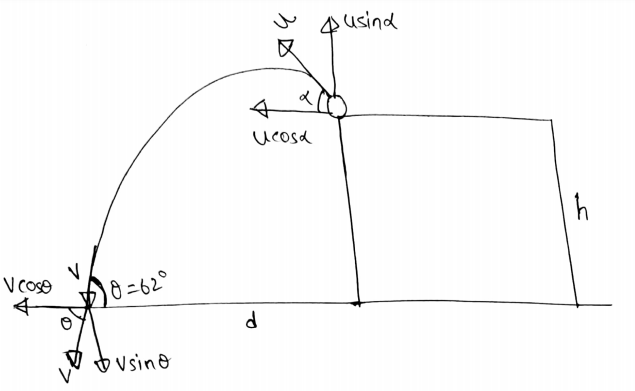In the figure, a ball is thrown leftward from the left edge of the roof, at height h above the ground. The ball hits the ground 1.50 s later, at distance d = 26.0 m from the building and at angle e = 62.0° with the horizontal. (a) Find h. (Hint: One way is to reverse the motion, as if on videotape.) What are the (b) magnitude and (c) angle relative to the horizontal of the velocity at which the ball is thrown (positive angle for above horizontal, negative for below)? (a) Number Units (b) Number Units (c) Number Units
In the figure, a ball is thrown leftward from the left edge of the roof, at height h above the ground. The ball hits the ground 1.50 s later, at distance d = 26.0 m from the building and at angle e = 62.0° with the horizontal. (a) Find h. (Hint: One way is to reverse the motion, as if on videotape.) What are the (b) magnitude and (c) angle relative to the horizontal of the velocity at which the ball is thrown (positive angle for above horizontal, negative for below)? (a) Number Units (b) Number Units (c) Number Units
Related questions
Question
100%

Transcribed Image Text:In the figure, a ball is thrown leftward from the left edge of the roof, at height h above the ground. The ball hits the ground 1.50 s later, at distance d = 26.0 m from the building and at angle
e = 62.0° with the horizontal. (a) Find h. (Hint: One way is to reverse the motion, as if on videotape.) What are the (b) magnitude and (c) angle relative to the horizontal of the velocity at which
the ball is thrown (positive angle for above horizontal, negative for below)?
(a) Number
Units
(b) Number
Units
(c) Number
Units
Expert Solution
Step 1

Trending now
This is a popular solution!
Step by step
Solved in 4 steps with 8 images
